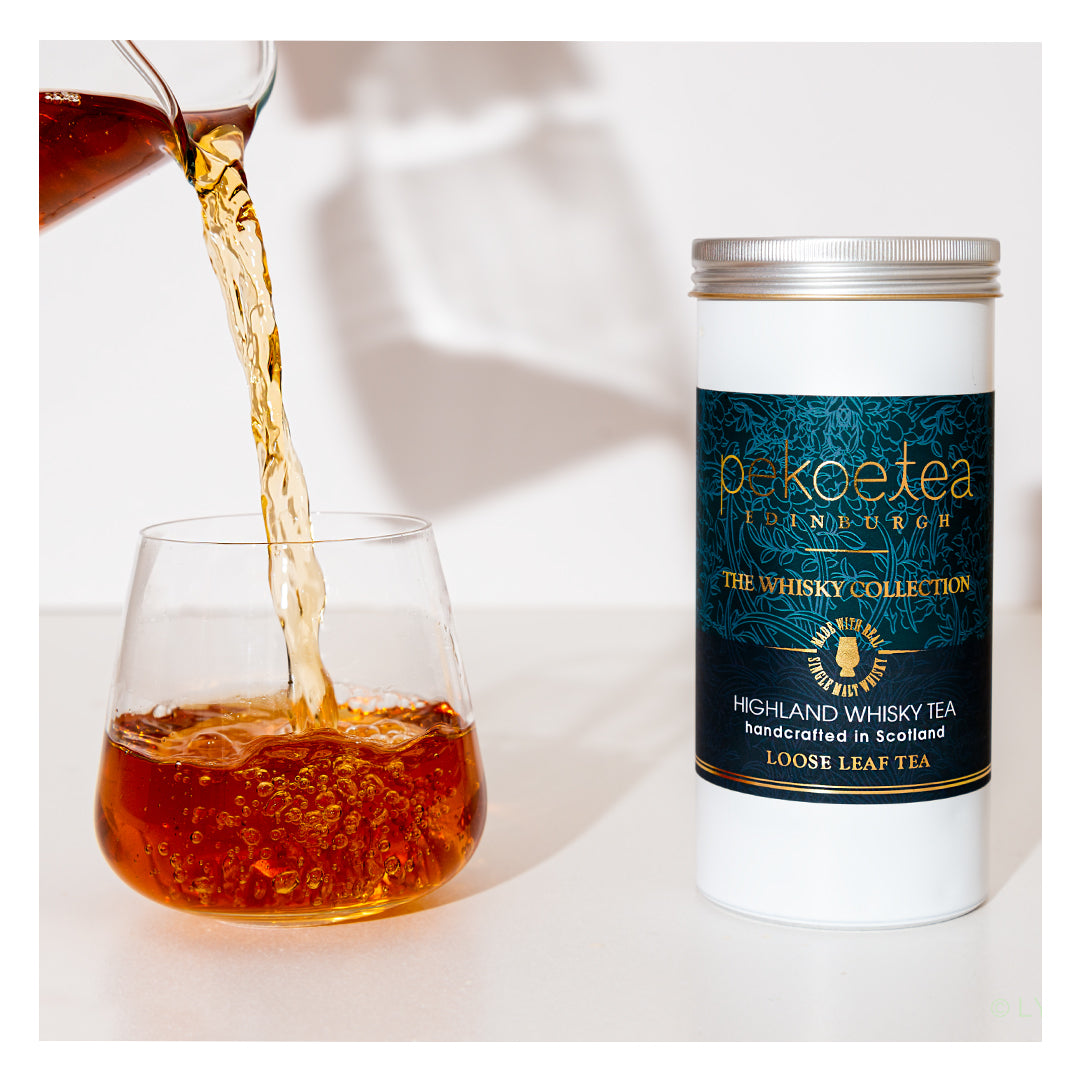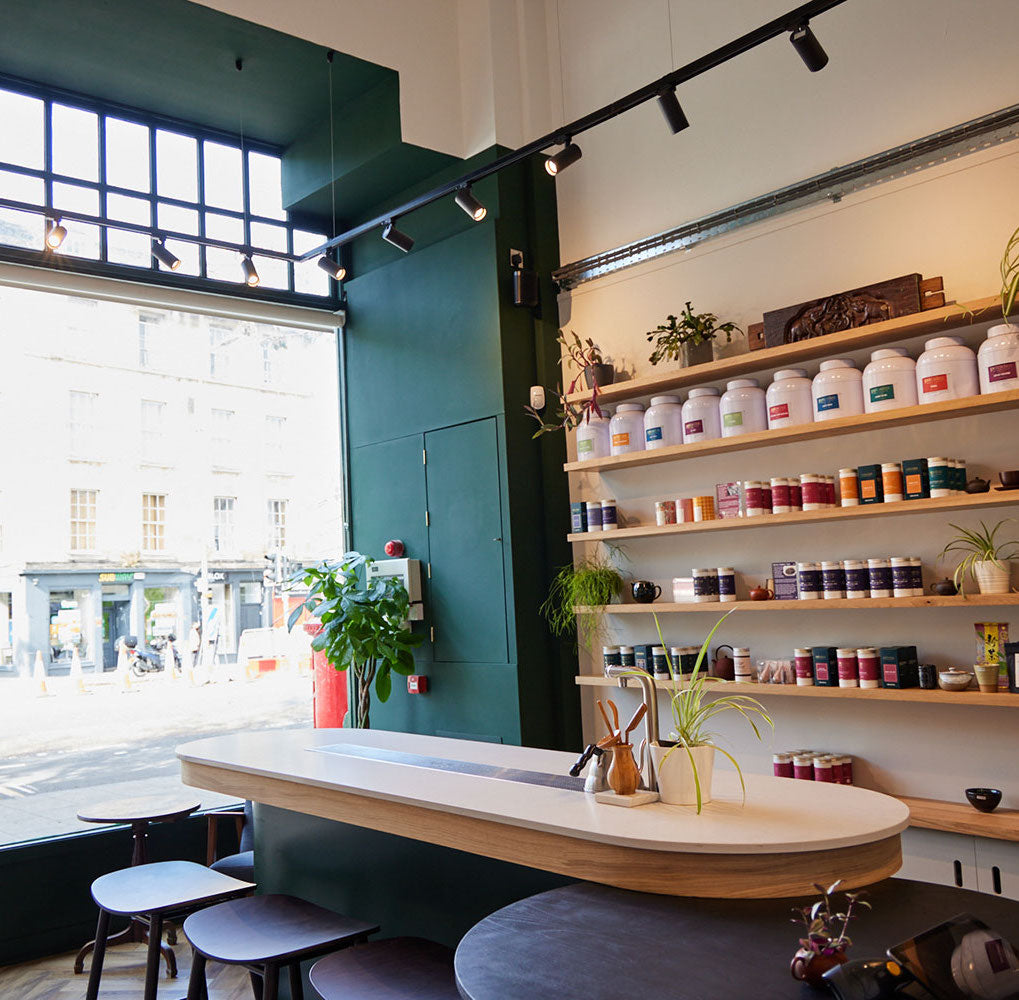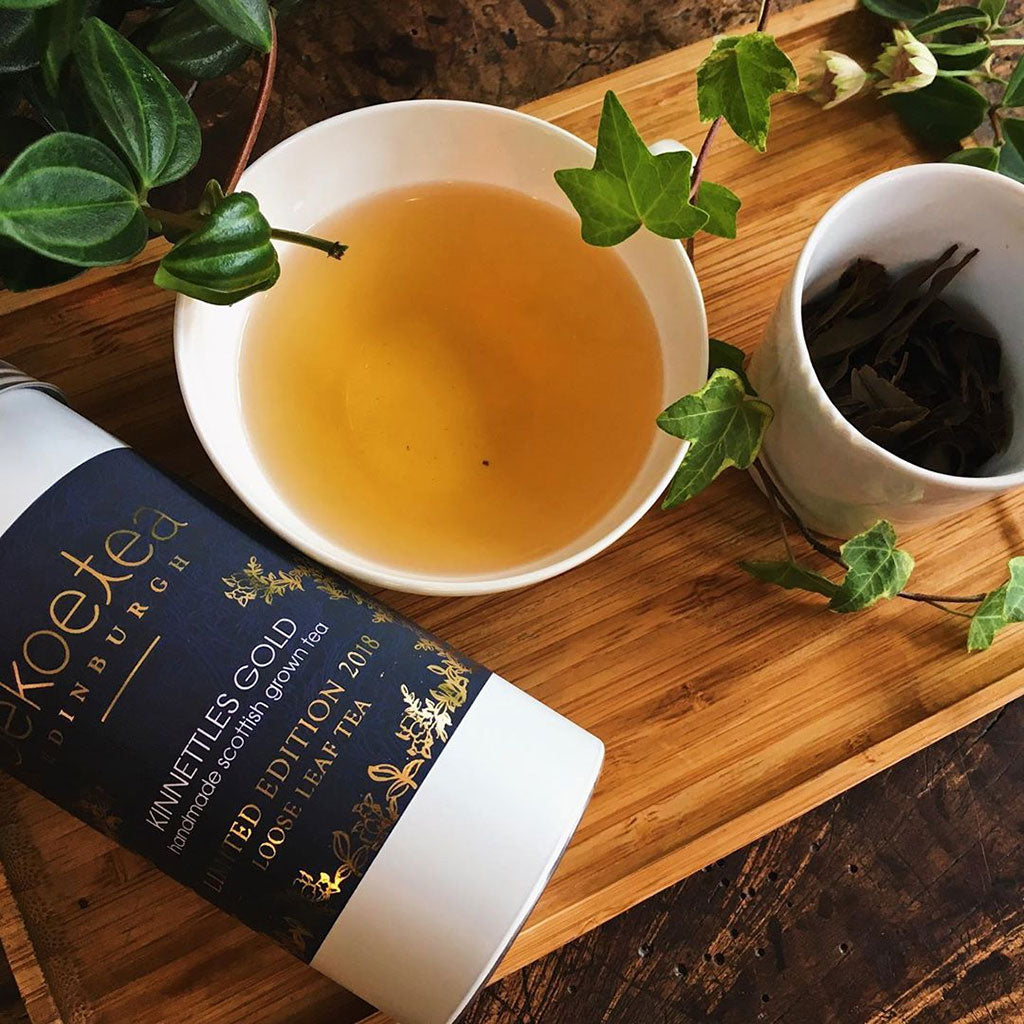Darjeeling tea is grown in the Darjeeling District of India's West Bengal state and is famous around the world for its unique flavour, history and culture. The Darjeeling name is regulated by the Indian government, and is very strictly limited to teas produced in specific subdivisions of the Darjeeling District. Mostly, these are high altitude valleys and hillsides around 1,000m in elevation, concentrated in the northern reaches of the district, which means the plants are under considerable environmental stresses. The tradeoff is that although the plants are stressed by their environment, they benefit from the high altitude sunlight as well as the soil quality.
Darjeeling tea is unusual among Indian teas in that it is usually made from plants of the Chinese varietal of the tea plant, Camellia sinensis var. sinensis, rather than the var. assamica that forms the bulk of Indian tea as well as much of the tea grown in southwestern China. This has its roots in the history of Indian tea production, with the British transplanting Chinese plants into colonial territories in India as part of an effort to break the Chinese state's control over the trade of black teas. The effort to create a new source of Chinese-style black tea under colonial control failed, as the completely different environmental and soil conditions resulted in a completely different tea even though the same plants were being used. Despite this, the tea produced was still excellent in its own right. Over the years an entirely new tea culture and idea of how to grow, process and enjoy the result has grown up around Darjeeling.
2017 - General Strike in Darjeeling
The Darjeeling District is mostly inhabited by Nepali-speaking people, also known as Gorkhas. Since the late colonial period, there have been political movements among the Gorkhas seeking more self-government as well as cultural protections. Since the end of colonial rule, these movements have generally campaigned for Darjeeling to become one of the states of the Republic of India.
Since the 1980s, there have been changes and the region has more autonomy, but in recent years there has been a breakdown of trust. People in Darjeeling worry that the West Bengal state government is imposing the teaching and use of the Bengali language in an effort to discourage the use of Nepali language.
For 104 days in 2017, a general strike across Darjeeling kept businesses closed and transportation at a standstill. The strikes took place over the second flush harvesting period, leaving very few estates still operating. A compromise to end the strikes was found in September, leaving the hope that the estates would be able to get back in order in time for an autumn flush harvest, but it is possible that there will be no substantial harvesting until the 2018 first flush is ready.
 Darjeeling tea is divided up according to 'flushes', or growth seasons. The first flush in the early spring comes as the plants emerge from winter and begin to put on new growth. Since tea is made from the freshest buds and leaves on the plant, this is always keenly awaited and the first pickings of the year from well known estates are often quite collectible. The leaves stay quite green, since the tea is not completely oxidised during its processing. First flush darjeeling is fresh and crisp with a floral aroma that can also come through in the flavour if the tea is of a high enough quality. A slight astringency is also often present, which gives the tea a cleansing feel on the palate.
Darjeeling tea is divided up according to 'flushes', or growth seasons. The first flush in the early spring comes as the plants emerge from winter and begin to put on new growth. Since tea is made from the freshest buds and leaves on the plant, this is always keenly awaited and the first pickings of the year from well known estates are often quite collectible. The leaves stay quite green, since the tea is not completely oxidised during its processing. First flush darjeeling is fresh and crisp with a floral aroma that can also come through in the flavour if the tea is of a high enough quality. A slight astringency is also often present, which gives the tea a cleansing feel on the palate.
The second flush starts to grow in the early summer and has a stronger, more full-bodied flavour than the first flush. The processing is slightly different in the second flush, with full oxidisation taking place and a more intense heat used to wither the leaves. The result is a tea that tends towards malty and rich flavours, but even so it will still not be anywhere near as robust as an Assam tea. Second flush Darjeelings are often taken without milk, sugar or any other addition. Second flush Darjeelings are noted for the notes of muscatel that often emerge in their flavours. Muscatel in tea is notoriously hard to define, but perhaps might be described as a sweet and mildly spicy grape flavour.
The monsoon flush happens during the late summer as the rains stop. The plants have grown very quickly during this phase and must be harvested or they will just keep expanding over the years until they become unmanageable. Since the plants have to be harvested, the tea is sold, but as monsoon flush tea is generally not very high quality it usually goes into blends rather than used as a single estate tea.
The final harvest of the year is the autumn flush, generally happening around late October or November. It is the most challenging of the harvests to arrange and is simply not possible some years if the weather conditions are not suitable and the tea plants go into early dormancy. When it is possible, the result is regarded by some as the finest flush of the year. The plants are growing slowly as they wind down towards the end of the year, so the leaves have more sap than usual in them. This comes through in the flavour as a full bodied, naturally fruity character that is absent in most Darjeelings. The 2016 harvest of Gopaldhara Estate Red Thunder Darjeeling rounded off a rich and fruity flavour with a natural sweetness and an earthy effect that was quite unusual for any Indian tea, but certainly of the highest quality.
The unique flavours of autumn flush Darjeelings are partly due to the slow growth of the plant, partly due to the soils and conditions the plant lives in, and partly due to the effects of the turning season during the short picking time. On high altitude estates, the plants will be beginning to feel the effects of the frosts as temperatures drop. The tea plants will begin to wilt, and the leaves will actually start to oxidise while they are still on the plant, creating a fascinating combination of flavours that bring in the results of oxidisation while keeping the sharp, fruity flavours of fresh tea leaves. This combination is very difficult to achieve, and not every autumn flush harvest picks at the exact few weeks where the weather causes this effect, but when it happens the result is truly one of the most exquisite teas available anywhere.
Darjeelings as a whole are sometimes referred to as the Champagne of teas, a title that quickly summarises the esteem they are held in, the importance of the landscape and the climate in getting them right and the great skill involved in raising the plants and producing the tea from them. While the autumn flush perhaps goes furthest in earning this distinction, Darjeeling teas from throughout the year each have unique and fascinating properties to explore from estate to estate. Part of the experience of single estate teas is following the same estates from year to year and finding how much variety can exist on the same land. The same tea can be almost completely unfamiliar depending on the techniques used to process it, the weather on the estate while it is growing, and just unexpected events that might cause changes or disruption.












